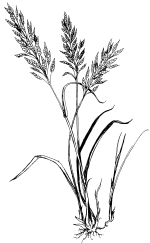
1854-1885: The Koester Prairie Site

The WMA is now located in sections 25 and 26. Prairie Creek and adjacent wetlands are shown in the southern and eastern part of the area. Survey by United States General Land Office (July, August 1854)

Includes: Wet prairie Mesic prairie Aspen-Oak lands Big Woods

The WMA is now located in sections 25 and 26. Prairie Creek and adjacent wetlands are shown in the southern and eastern part of the area. Survey by United States General Land Office (July, August 1854)
The original survey of the Koester Prairie site is shown at the left. The site is now located in sections 25 and 26 at the right side of the map. The Koester farm and its adjacent wetlands are shown in the southern and eastern part of the area.
Based on the information collected by the General Land Office, the image below provides a reconstruction of the types of vegetation in this area prior to outside settlement.
Vegetation before outside settlement included:
Wet prairie includes land along Prairie Creek to the west and Spring Creek near the eastern boundary of the present WMA.
Mesic prairie is moderately dry and occupies the higher ground in the middle of the current WMA. Mesic prairie is dominated by grasses like big and little bluestem, Indian grass, and switch grass, with smaller plants such as Prairie Smoke and Prairie Phlox.
Aspen-Oak lands are toward the western part of the present WMA. Along with these scattered hardwoods were native grasses and plants, which created the savanna.
Big Woods, consisting of oak, maple, and basswood was located to the west. The woodlands extended southwest toward what is today the Big Woods State Park.

Land patent granted to veteran Timothy Hoskins (1860)

This document shows the bequest made to veteran Timothy Hoskins, who then transferred parts of sections 25 and 26, where the WMA is located, to George Thorp.

This document shows the bequest made to veteran Timothy Hoskins, who then transferred parts of sections 25 and 26, where the WMA is located, to George Thorp.
Further changes...
After the land was surveyed, sections of it were granted to veterans of the War of 1812. The veterans were then able to sell it to others.
Cultivation
The lower flat areas of the site were plowed for agriculture, resulting in a loss of native species in those areas. As the soil of tall grass prairies like Prairie Creek was rich with moisture from the moderate climate, these areas were thought of as good places to settle for agricultural and living purposes. Early European settlers took advantage of the rich soil by cultivating it to farm. However, this meant they had to uproot massive amounts of microorganisms and biomass. Previously, the deep roots of these grasslands filled the soil with nutrients while also stabilizing the ground, yet with time and repetitive plowing, the soil was left exposed to the air, removing nutrients in the soil. This kind of unsustainable plowing left the region with dry, nutrient-less dirt.
Fire
Fires would have continued to break out naturally during dry periods, although fire would have been controlled whenever possible.
Grazing
Dairy cows, horses, and perhaps some sheep were grazed on the steeper slopes of the prairie and savanna, where cultivation was not possible. Previously, the herds of wildlife would graze and then move on, but the domestic animals grazed on the same pastures through most of the seasons when grasses grew. The change increased pressure on the grasses, although the scale of grazing was probably moderate in this period.
Explore the prairie history by navigating the different periods of the site using the table of contents below.


